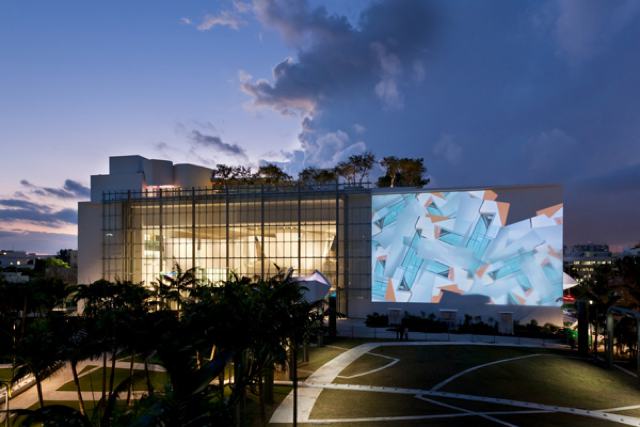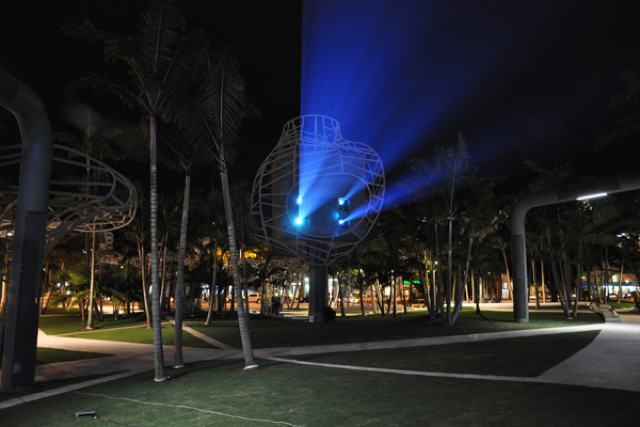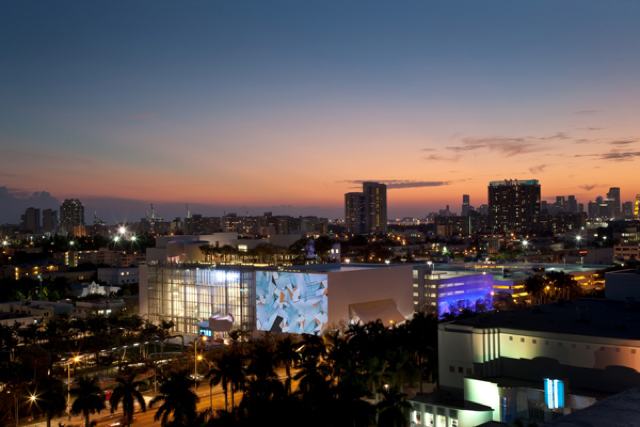Against the sun-streaked, palm-silhouetted skies of Miami, Florida, generated software murals create a layer of intricate virtual architecture atop a flat canvas of Frank Gehry’s hall for the New World Symphony. LA-based Casey Reas (known to many as co-creator of Processing) worked with Tal Rosner to product shifting generative murals in what I think is a triumph of digital expressionism.
As the architecture itself is collapsed into cubist/abstract fractions of time, the building itself echoes ever-shifting structures, a silent but vibrant commentary on the urban landscape.
The images themselves are stationary in the sample, but Casey shares with us some video that captures those stills in the 365-composition montage. More images and statement by the artist below.
Chronograph [Video] [Update: fixed; now public!]
I love that the word “choreography” comes up, as it seems fitting, a kind of choreography of design scored into the rectangular image.
Created for the building’s 7,000-square-foot exterior projection wall, this large-scale installation takes its inspiration directly from the new building and the surrounding historical art deco neighborhood of Miami Beach. Based on thousands of photographs taken over the course of the construction of the new building and images of local architecture, the ever-changing mural shifts between the recognizable and the abstract, animating and creating new forms on the building’s surface.
Using the same visual source material, the mural is punctuated by hourly videographic events marking the top of each hour, achieved by altering aspects of the work’s choreography – detail, pacing, palette, rhythm, geometry, and pattern. Custom-written software creates not only create hourly cycles, but generate an ever-changing visual experience over time for new and repeat visitors.


